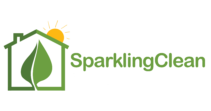In recent decades, the links between the health of our planet and the wellbeing of its human inhabitants have become increasingly evident. Environmental degradation directly impacts our physical and mental health, while our personal lifestyle choices collectively influence the health of the planet. To carve a pathway toward a sustainable future, it is critical to recognize that individual actions and eco-friendly habits, such as cleaning with environmentally friendly products, can contribute to wide-reaching benefits for both ourselves and the Earth. Let’s embark on an exploration of how adopting eco-friendly habits can foster not only personal wellbeing but also a healthier planet.
The Ripple Effect of Eco-Friendly Cleaning
The process of cleaning, ironically, has often involved introducing harmful chemicals into our homes and environment. Traditional cleaning products can contain volatile organic compounds (VOCs) and other toxins that can cause respiratory issues, skin irritations, and other health problems when inhaled or absorbed through the skin. When washed down our drains, these chemicals don’t disappear; they can persist in our waterways, affecting aquatic life and potentially re-entering our drinking water sources.
In contrast, eco-friendly cleaning products are typically made from natural, biodegradable ingredients that do not cause undue harm to the environment or our health. When we choose these products, we reduce the number of harmful chemicals released into the air and water, promoting better indoor air quality and protecting water quality. Furthermore, the simple act of selecting a green cleaning product creates a ripple effect, influencing market demand and encouraging more companies to prioritize sustainability in their products.
The Symbiotic Relationship between the Planet and Personal Health
The symbiotic relationship between the environment and human health is as old as life itself. Clean air, pure water, nutritious food, and a stable climate are the foundation upon which our health is built. Without them, our bodies cannot function properly, let alone thrive. Unfortunately, the modern era has seen a disconnect between our actions and their impact on these indispensable natural resources.
How Personal Choices Impact Environmental Health
Every decision we make—from what we eat, to how we travel, to the waste we produce—affects the environment in some way. The use of pesticides in agriculture, emissions from cars and industry, and the proliferation of single-use plastics are just a few examples of how our choices put stress on the planet.
Conversely, each positive action we take can lessen that strain. By consuming organic and locally-sourced foods, opting for public transport or biking over driving, and reducing plastic use, we start to alleviate the pressure on the environment.
Direct Benefits of Environment-Friendly Practices on Personal Health
When we engage in eco-friendly habits, our health can improve in direct ways:
- Improved Respiratory Health: Choosing clean energy and reducing reliance on fossil fuels can decrease air pollution, resulting in fewer respiratory issues like asthma.
- Better Nutrition: Eating locally-sourced, organic foods means fewer pesticides and chemicals in our diet and more nutrients, as local produce is often fresher.
- Increased Physical Activity: Opting for biking or walking over driving not only cuts carbon emissions but also enhances cardiovascular health.
- Stress Reduction: Engaging with nature through eco-friendly activities like gardening or tree-planting has been shown to reduce stress levels and improve mental health.
The Bigger Picture: Ecosystems and Global Health
Looking beyond personal benefits, protecting ecosystems is vital for global health. Intact forests and oceans act as carbon sinks, mitigate climate change, and serve as habitats for the diversity of species that are crucial for the planet’s balance and human survival. Furthermore, biodiversity in plants and animals is a rich resource for medical research and pharmaceutical developments, many of which play a vital role in health care.

Eco-Friendly Habits for a Healthier You and Planet
Let’s delve into some practical habits that can reinforce the bond between a thriving planet and our health:
1. Adopt a Plant-Based Diet
Shift towards a plant-based diet. This doesn’t mean you need to become vegan or vegetarian overnight, but even one plant-based meal a day can significantly reduce your carbon footprint. It’s also been shown that a diet rich in plant-based foods can lower the risk of chronic diseases.
2. Reduce, Reuse, Recycle
A fundamental eco-friendly mantra, this three-pronged approach can dramatically cut down the waste we produce. By reducing consumption, we lessen the demand for new products and the strain on resources. Reusing items delays their journey to the landfill, and recycling helps in the conservation of materials and energy.
3. Conserve Water
Water conservation is crucial as clean, fresh water is a finite resource. Simple actions like fixing leaks, taking shorter showers, and installing water-saving fixtures can make a significant difference in water use.
4. Opt for Sustainable Transportation
Whenever possible, use public transport, carpool, walk, or bike. These transportation methods reduce carbon emissions, decrease air pollution, and increase your daily physical activity.
5. Support Eco-Friendly Companies
Purchase from companies that have sustainable practices. Whether it’s clothing, food, or technology, supporting businesses that prioritize the planet’s health influences market trends and motivates other companies to follow suit.
6. Engage in Community Initiatives
Get involved in local environmental groups or initiatives. This can range from participating in tree planting events, community gardens, or clean-up drives. These activities can foster a sense of community while improving the local environment.
7. Spread Awareness
Educate yourself and others about environmental issues and their impact on personal and planetary health. Knowledge is a powerful tool for change.
The Health of the Planet is Our Own
In closing, let us all remember that in caring for the Earth, we are, in fact, caring for ourselves. The path to wellbeing is green and vibrant, and it begins with the daily choices we make at home and beyond. Let’s continue to connect the dots between a healthy planet and personal health, for the benefit of all. Join the movement towards an eco-conscious lifestyle; the rewards are immeasurable, and the time to act is now. Our choices matter, and each small step toward eco-friendliness is a leap towards a thriving planet and a healthier us. Let us be the custodians of our own well-being by being the stewards of the Earth.

Brazilian mother of two and CEO of Sparkling Clean Pro & Green Living Supplies since 2005. Working as an ecological advocate within the cleaning industry & aiding immigrant families and women at risk.











